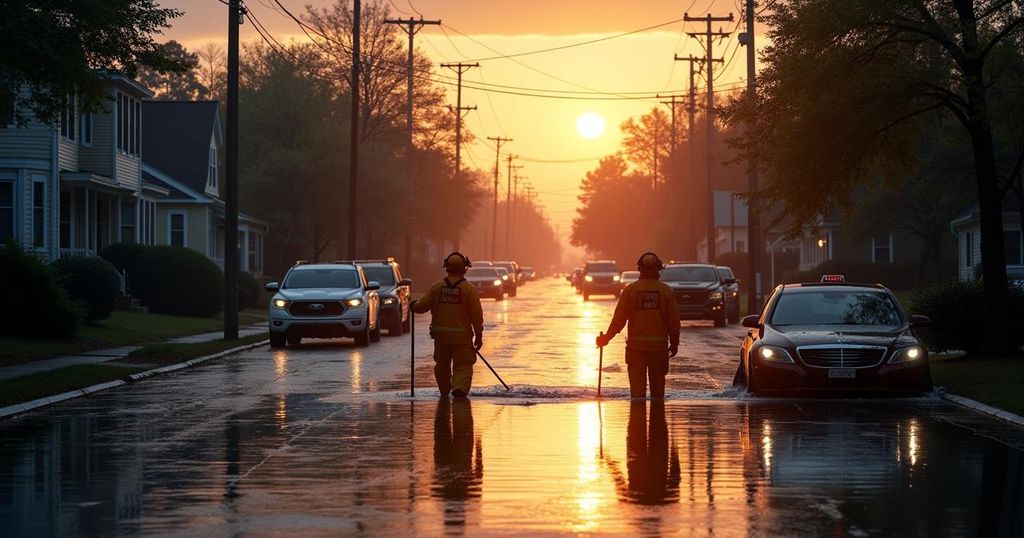Hurricane Helene’s Devastating Impact on North Carolina Communities

Hurricane Helene has caused widespread devastation in western North Carolina, with significant flooding leading to communication failures and over 1,000 residents seeking help for missing loved ones. The storm has resulted in at least 61 deaths across five states, with challenges in accessing affected areas hindering rescue efforts. Authorities report that many roads remain closed, and concerns about additional rain contribute to ongoing dangers. The community is left to confront a transformed landscape, struggling for hope amid uncertainty about recovery.
On a clear and cool Sunday morning in the North Carolina mountains, the stark devastation from Hurricane Helene became evident. The storm, which made landfall in Florida as a Category 4 hurricane, subsequently caused catastrophic flooding across multiple states, including North Carolina. The towns in western North Carolina have been severely impacted, grappling with the aftermath as communication systems falter and residents struggle to connect with their loved ones. Reports indicate that more than 1,000 residents in Buncombe County have sought assistance in locating friends and family amid the breakdown of mobile and internet services. The toll of the storm has been tragic, with at least 61 fatalities reported across five states, including North Carolina, which has lost ten lives so far. Access to many affected areas remains obstructed, compounded by over 400 closed roads, including major interstates crucial for travel in and out of Asheville. Local authorities, such as Swannanoa’s Fire Chief Anthony Penland, describe complete devastation in their communities, stating, “We have complete neighborhoods that are no longer there.” The search-and-rescue operations face immense challenges, as rescuers sift through what remains of neighborhoods that have essentially vanished. Flood alerts persist as swollen waterways pose continuous risks, and apprehensions linger regarding potential additional rainfall from the remnants of Helene. Around Asheville, witnesses view the transformed landscape—where roads and parks have been swallowed by the river, and businesses are inundated with debris. The images exemplify the devastation; residents like Colton Dion capture the moment through art, remarking on the profound changes to their environment. Others, reflecting on their community’s resilience, express hopes for recovery despite uncertainties surrounding the future of local businesses and cherished landmarks.
The situation in North Carolina is a critical example of the impact of severe weather events exacerbated by climate change. As hurricanes grow more powerful and unpredictable, regions such as western North Carolina must grapple with the realities of increased flooding and destruction. Hurricane Helene serves as a reminder of the vulnerabilities faced by small towns, where infrastructure and communication can quickly fail under the pressures of natural disasters. Moreover, the struggle to maintain connectivity during such emergencies underscores the need for improved disaster response systems and infrastructure. The human toll of the storm reflects broader trends in weather-related fatalities, highlighting the urgency of preparedness at individual and community levels. Future implications for hurricane season require careful consideration of these events, their frequency, and their potential to disrupt lives and economies.
In summary, the aftermath of Hurricane Helene has left deep scars on the small towns of western North Carolina, exposing the fragility of life, infrastructure, and communication during natural disasters. With significant loss reported and an uncertain future ahead, the community’s resilience will be tested as they navigate the path to recovery. Continued efforts in search and rescue and support for those affected are essential as officials work to restore communication and connectivity in the region. Ultimately, the events of Helene may well inform future preparations regarding storm readiness and strengths in local recovery processes.
Original Source: www.washingtonpost.com







